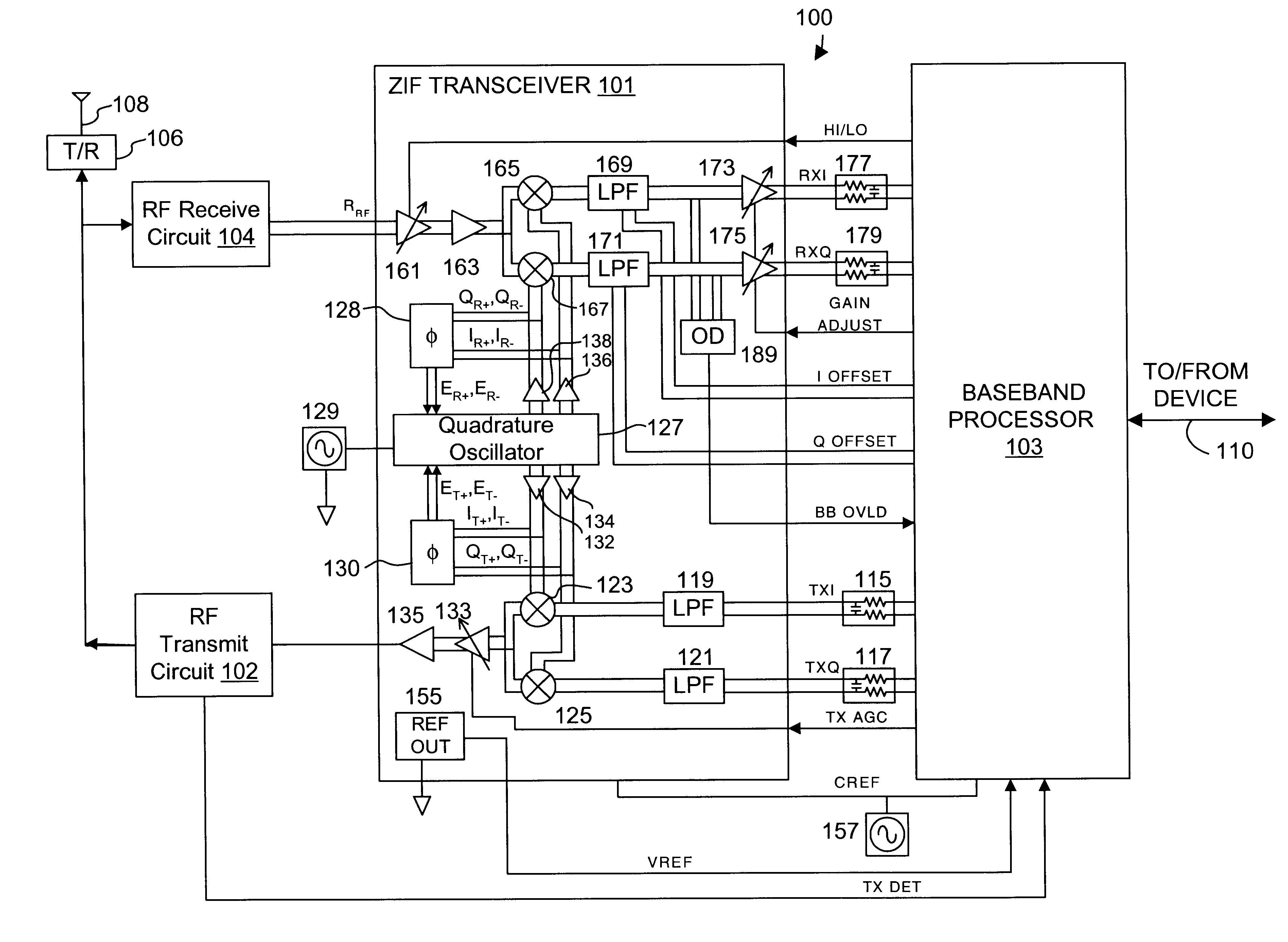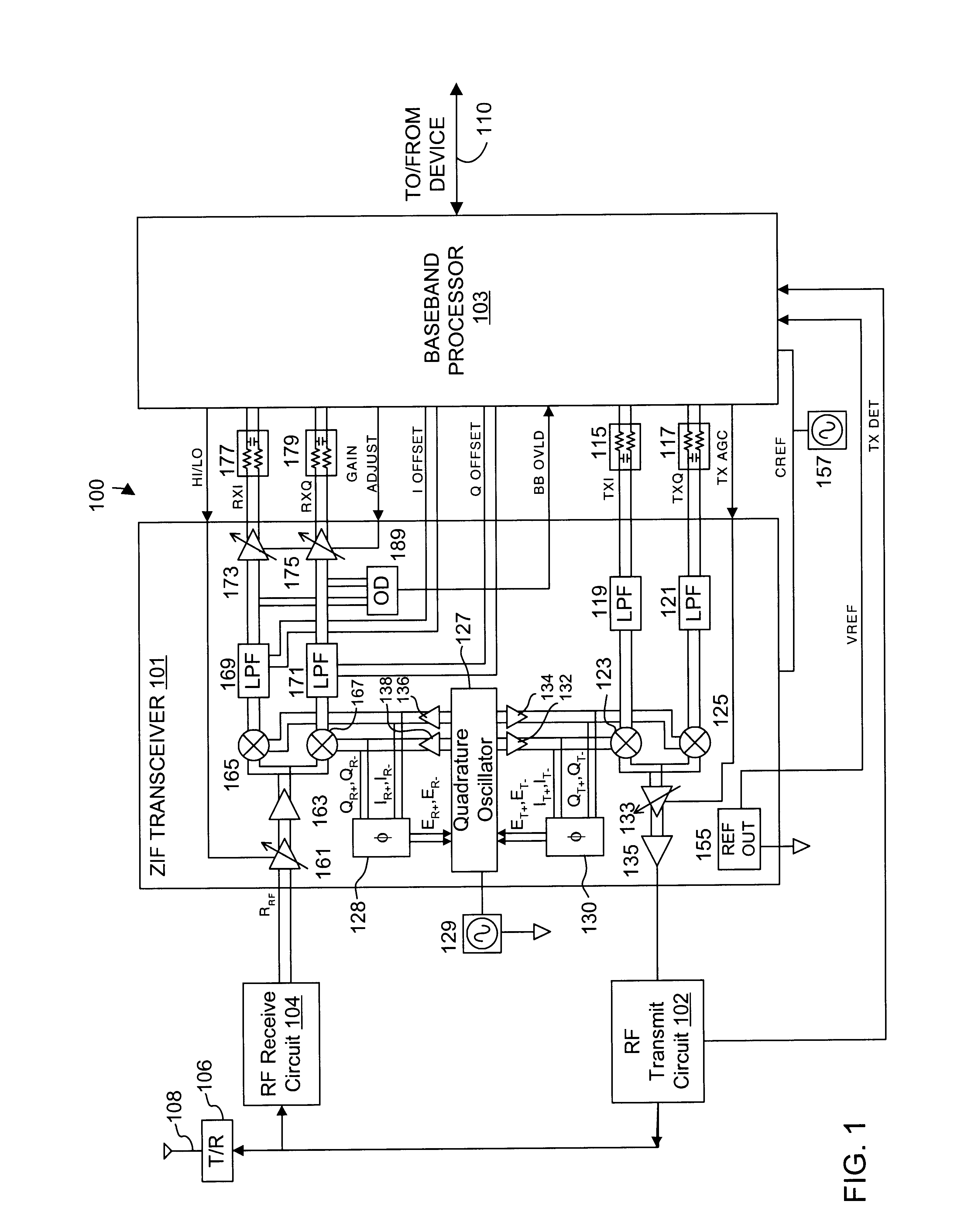Precision automatic gain control circuit
a gain control and precision technology, applied in the direction of gain control, volume compression/expansion having semiconductor devices, volume compression/expansion, etc., can solve the problems of limited input signal swing capability, agc stage unacceptable, and total harmonic distortion (thd) greater than 1%, so as to optimize both noise and linearity performance, the effect of low absolute gain tolerance and excellent gain matching
- Summary
- Abstract
- Description
- Claims
- Application Information
AI Technical Summary
Benefits of technology
Problems solved by technology
Method used
Image
Examples
Embodiment Construction
FIG. 1 is a simplified block diagram of an exemplary wireless transceiver 100 implemented according to an embodiment of the present invention. It is understood that the wireless transceiver 100 is applicable to WLAN configurations or any other type of radio or wireless communications for other types of applications. The wireless transceiver 100 is implemented as a zero intermediate frequency (ZIF) architecture including a ZIF transceiver 101, a baseband processor 103, a radio frequency (RF) transmit circuit 102, an RF receive circuit 104, a transmit / receive (T / R) switch 106, and an antenna 108. The ZIF architecture enables a simplified configuration by entirely eliminating intermediate frequency (IF) logic and associated circuitry. In this manner, only two primary modules, chips, or ICs (transceiver and processor) are utilized in the ZIF architecture to enable wireless communications. The ZIF transceiver 101 includes a quadrature oscillator 127 with phase error correction.
The wirele...
PUM
 Login to View More
Login to View More Abstract
Description
Claims
Application Information
 Login to View More
Login to View More - R&D
- Intellectual Property
- Life Sciences
- Materials
- Tech Scout
- Unparalleled Data Quality
- Higher Quality Content
- 60% Fewer Hallucinations
Browse by: Latest US Patents, China's latest patents, Technical Efficacy Thesaurus, Application Domain, Technology Topic, Popular Technical Reports.
© 2025 PatSnap. All rights reserved.Legal|Privacy policy|Modern Slavery Act Transparency Statement|Sitemap|About US| Contact US: help@patsnap.com



